Today, the first color peeks from slowly swelling buds of ‘Arnold Promise’ witch hazel (Hamamelis x intermedia ‘Arnold Promise’, below). With a spell of frigid temperatures on the way, peak flowering is likely to be further delayed. Still, spring is on the way, and once the witch hazels are flowering milder days must be around the corner.
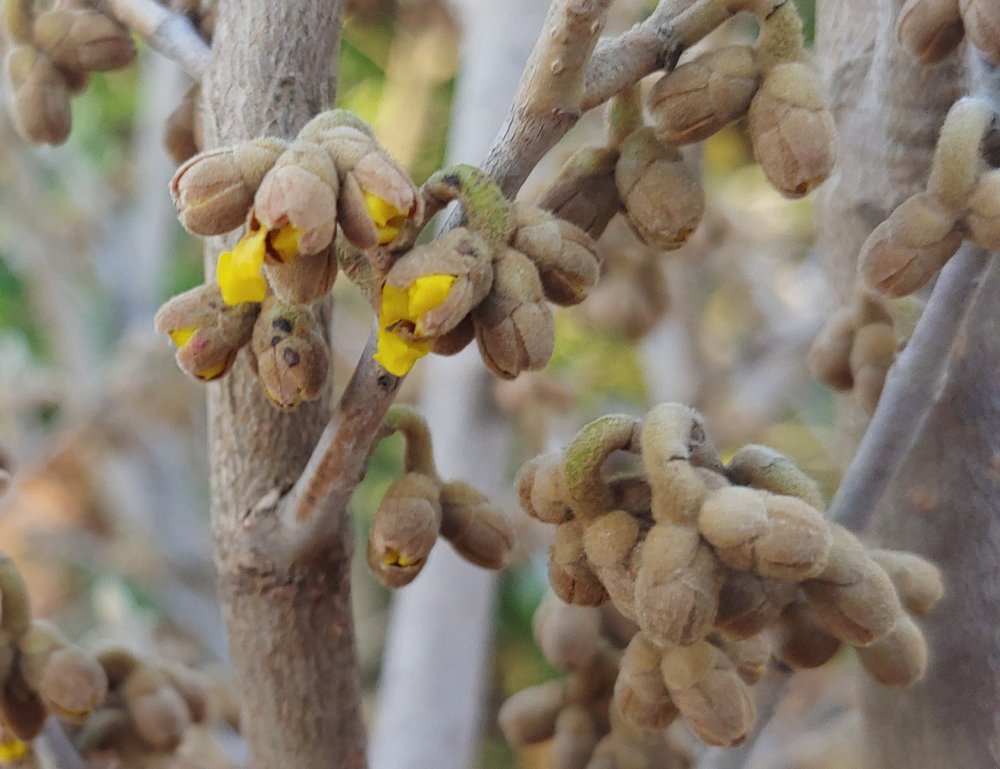
Flowers of the Vernal witch hazel (Hamamelis vernalis, below) seem smaller this winter, though this is surely my imagination. It’s blooms are smaller and less brightly colored than other witch hazels, but despite this year’s delayed flowering the mid-winter blooms are greatly appreciated. The flowers are fragrant, though my olfactory senses have long been challenged.
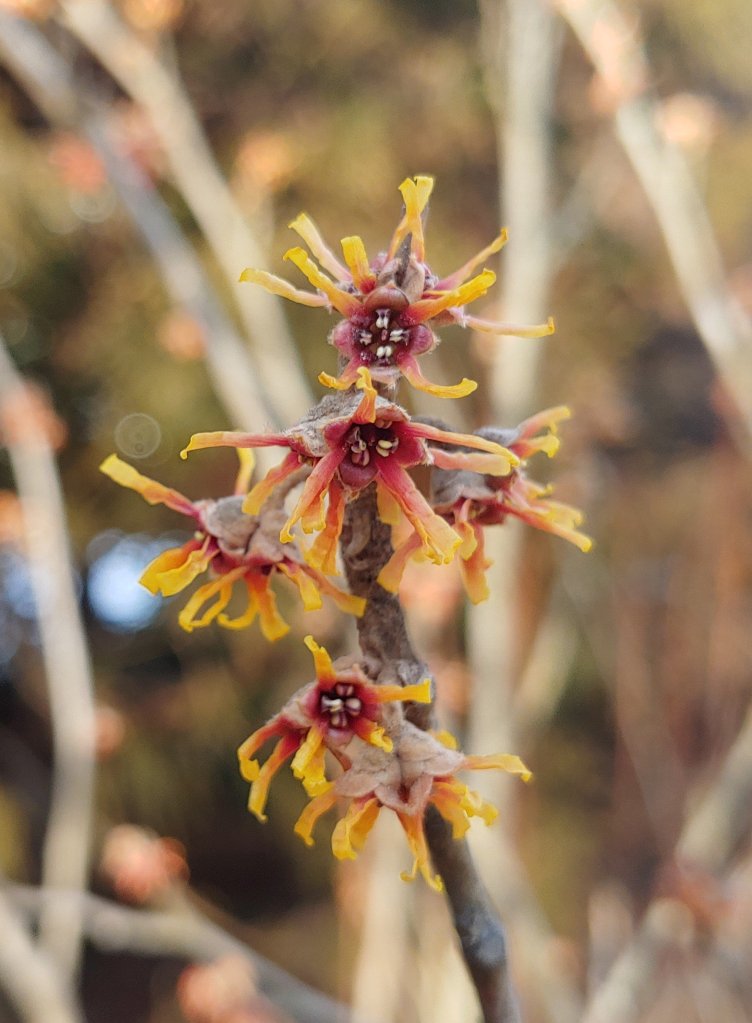
While flowering of hellebores started quite early in this mild early winter, chillier temperatures in the new year have slowed the progression of blooms. Many flowers are expected by this second week of February, and I did manage to clear fallen leaves from hellebores’ crowns so that flowers can be seen.
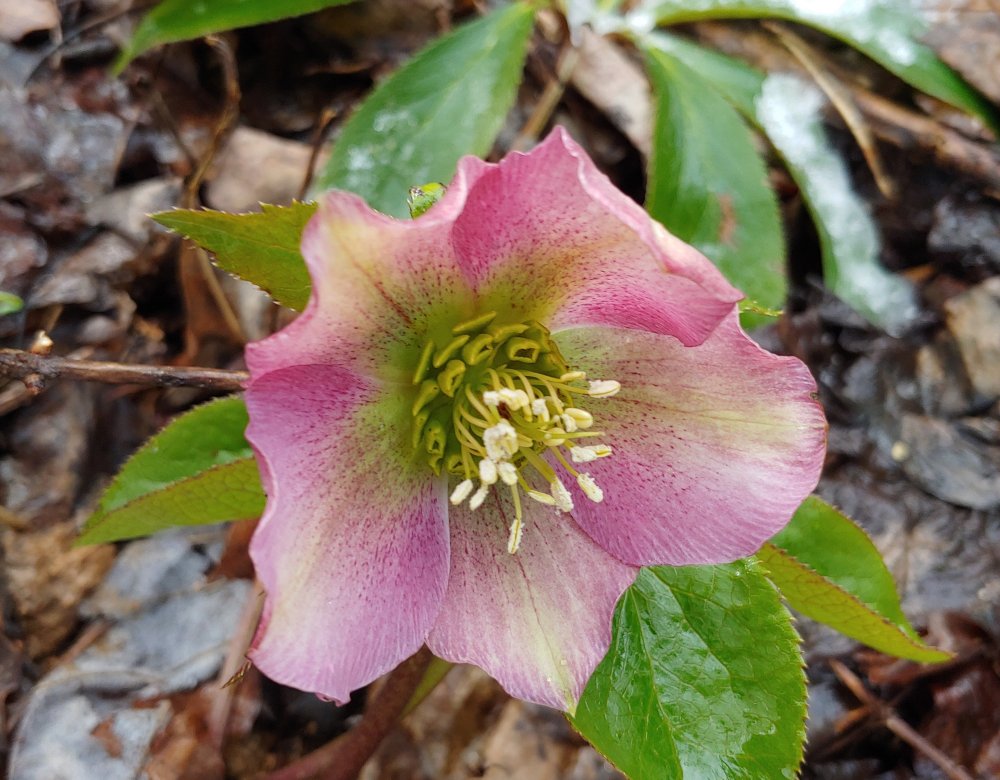
Again this year, hellebores’ leaves that remain green without severe cold have not been removed, as is often recommended so that flowers are more easily viewed. Flowers began developing early this winter, which makes the removal of leaves more difficult and time consuming. Clearing the piles of fallen leaves from surrounding trees is quickly accomplished, but I’m not anxious to do anything more than is necessary in the winter months. Certainly, I’m itching to get outdoors more with spring a few weeks away, but the hellebore leaves barely obstruct the flowers. The appearance is cleaner without the leaves, but tidiness is of minimal concern in the winter garden.
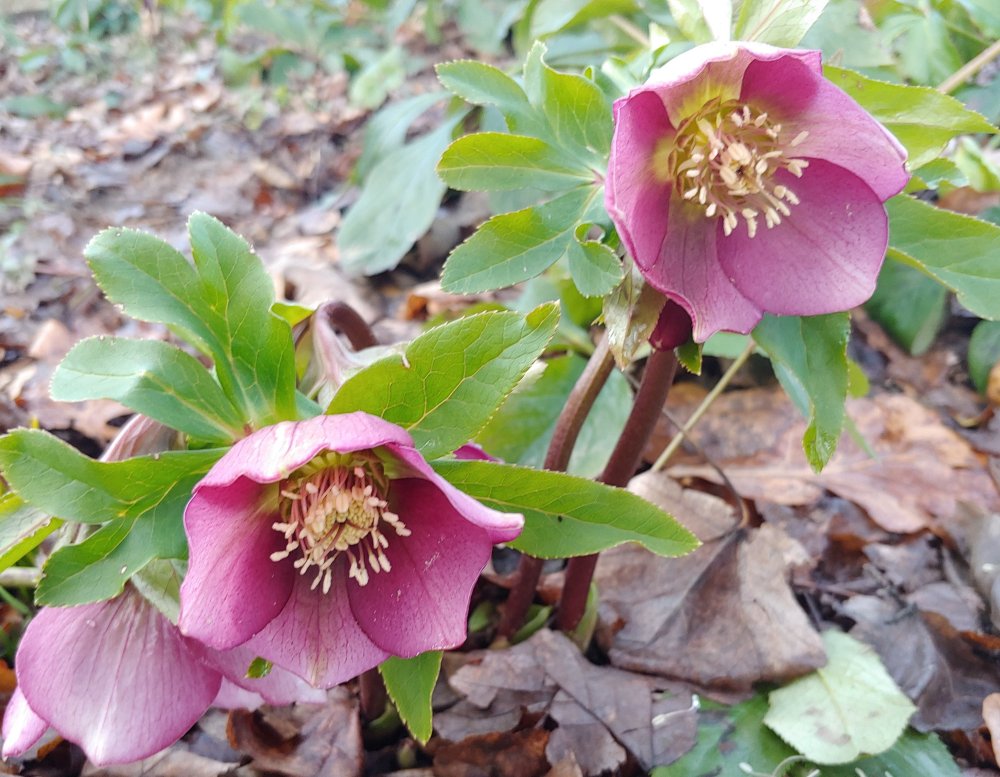
I am quite pleased that several recently transplanted hellebores are flowering (above). Yes, these were left too long, congesting the fertile area beneath a Chinese dogwood where seeds from long established clumps are washed by rain. One of every three large seedlings was transplanted from this crowded area where one plant could not be distinguished from the other, so now it looks much better.

Plenty of smaller seedlings remain that are likely to be of flowering size a year from now. I suppose that some day there will be no spaces to transplant hellebores into, but I will not be weeding tiny seedlings anytime soon.
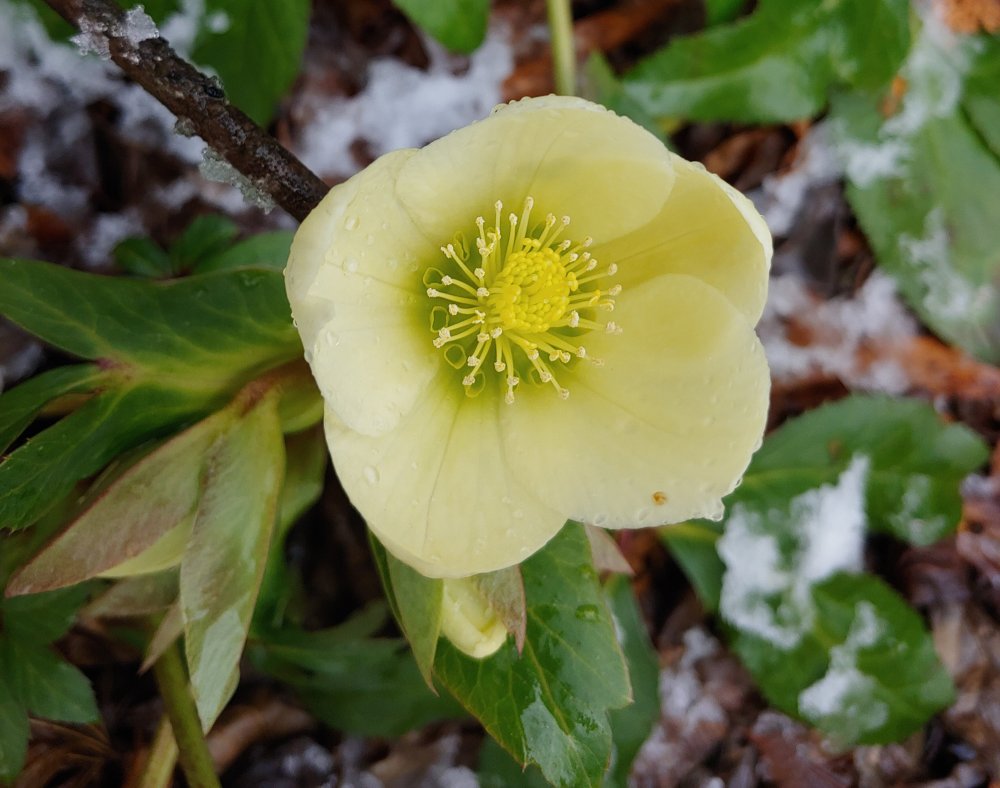
To cut down on the number of hellebore seedlings that come up in my garden, I remove the dying flowers before they go to seed. Otherwise, I spend too much time removing seedlings.
I admire your energy. I am not to the point when I consider seedlings to be a nuisance.
My garden is so full of hellebore plants that I don’t want more. That’s why I take the time to remove the dead flowers. I sometimes save seeds o give to friends.
I have dug some seedlings to share with our sons, and expect I’ll give away many more before I start weeding out the bulk of seedlings. I am amazed at the number of people unaware of hellebores, and many others hesitate due to the cost. Free plants are almost always good.
Dave…our hellebores (some of them, at least) seem simply to expand from one spot, one plant. I have never seen any seedlings washed along, generating new plants. They are all in heavily leaved areas, so I’m wondering if I should do a better job of raking away some of the heavy leaves. If so, when should I expect the seeds (if any) to develop? (No need to do anything too early if I can procrastinate.)
My seedlings appear to originate mostly from Helleborus x hybridis, or H. orientalis. Some other hellebore crosses are noted as sterile, and I suspect others seed infrequently because they flower deep in winter when there are few pollinators.